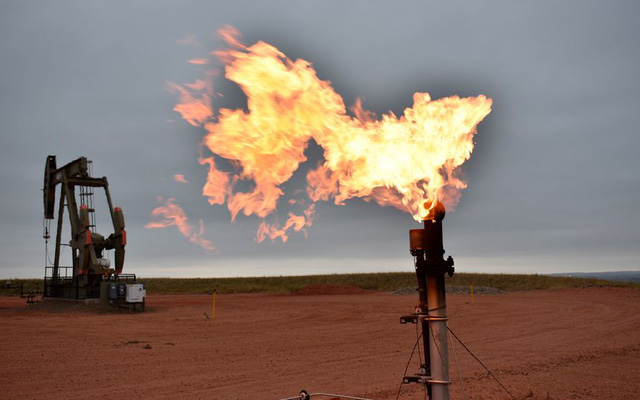Is this the first time the world has faced a severe shortage of fuel supply, or is it the first time that the price of one material has hit a record high when there are other materials to replace it?
After the shale oil revolution, up to now, the market is witnessing significant fluctuations, mainly due to the change in supply – demand from the crude oil market. According to oilprice, the price of US light sweet crude (WTI) at 6:20 am on November 30 (Vietnam time) increased by 0.97% (equivalent to 0.680 USD/barrel), to 70.63 USD/barrel. At the same time, the price of Brent crude oil for January delivery also increased by 0.99% (or 0.72 USD/barrel) to 73.44 USD/barrel.
These price fluctuations are due to the fact that after the COVID-19 pandemic subsided, the supply shortage in the crude oil market continued to persist, even longer than in the past.
Since June 2020, when the Organization of the Petroleum Exporting Countries (OPEC) and its partners (OPEC+) sharply cut production by 10 million barrels per day, the global oil market has shifted from a larger supply position. demand to demand is greater than supply. Currently, this situation shows no sign of changing.
Notably, before that, experts all emphasized that fossil fuels will gradually be replaced. According to the International Energy Agency, the energy transition is already underway. New fuel sources are already the second source of electricity generation, after coal, and will become the main source of electricity from now until 2040. However, world oil prices continue to skyrocket.
Why is that so?
In fact, this is not the first time the world has faced a serious shortage of fuel supply, nor the first time the price of one material has set a record high while there are other materials to replace it.
One such phenomenon is whale oil of the 19th century. In the 18th and early 19th centuries, people used sperm whale oil as fuel for lamps. Whale oil at that time had many uses: as a fuel, lubricant, soap making, candle wax, used in weaving, braiding rope.
However, the main use of whale oil at that time was to make oil for lamps. Whale oil can be used in kerosene lamps, providing a smokeless flame. The quality of whale oil was much higher than that of beeswax or tallow (which were fuel sources at the time). This is also the reason why the demand for whaling for oil increases.
A whaling ship pictured in 1905 in Spitsbergen, Norway. Photo: Hulton Archive / Getty
In response to market demand, whaling was carried out in full force in the mid-1700s and early 1800s. A single sperm whale can provide up to 3 tons of oil. Because of that, they were once considered the best living animals or oilfields in the fuel industry.
During the peak of whaling, the sperm whale oil lamp is lit not just in one room, but in entire houses, street lights, or public buildings. The elite instead of using candles made from animal fat, they only prefer candles made from whale fat. At that time, the light from whale oil also started a new light standard: Lumen standard.
In the years 1760-1770, the sperm whale oil industry flourished in the United States. Between 1770 and 1775, Americans produced up to 45,000 barrels of whale oil a year from Massachusetts, New York, Connecticut and Rhode Island. Next, a number of European countries also gradually joined the booming industry at that time.
However, catching sperm whales has pushed this fish to near extinction, as well as the difficulty and hardship of catching this giant fish has caused the price of whale oil to skyrocket and over time, the oil This expensive become rarer than ever.
The scarcity of whale oil at the time allowed the oil industry to begin to flourish. In the 20 years after its discovery in 1846, kerosene gradually replaced whale oil.
What is surprising is that the price of whale oil not only did not decline, but also set a record high in 1865. The problem is, then the price of oil was still high and the supply was limited in the early stages, and at the same time. as the dwindling supply of whale oil continued to support strong whale oil prices.
However, it wasn’t long before the development of petroleum brought the sperm whale oil industry down and pushed the industry into the past.
At present, fossil fuel sources such as coal, oil… are also witnessing the same phenomenon as the sperm whale oil industry in the past. Oil was once considered a “lifeline” for whales, but now, it is no longer the right choice when the environment is being affected more heavily than ever.
Even so, there is still no research to say whether this is the time of a new recession. Experts still think that oil prices are likely to remain high for a long time.
T&G International Joint Stock Company
Address: 352 Hue Street, Le Dai Hanh Ward, Hai Ba Trung District, Hanoi
Hotline: 0345786803
Email: hrm@tginterjsc.com
Website: http://tginternationaljsc.com





















